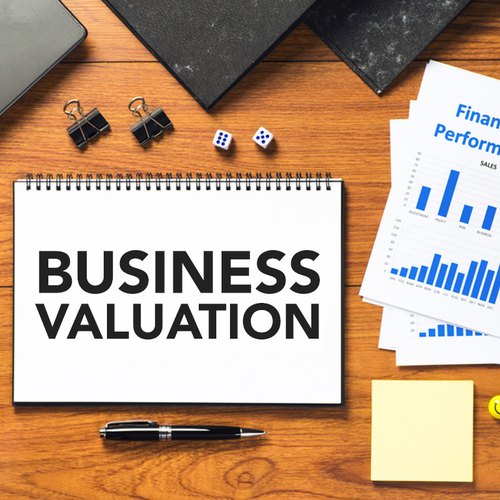
This is the time of the year when Fair Value of Assets is determined as on 31st March for financial reporting purposes in India in accordance with Ind AS 113 (the global equivalent of IFRS 13 and ASC 820 (US GAAP). However this year is very different as COVID-19 has been declared as pandemic by WHO on 11th March, 2020 affecting 216 countries with more than 11.7 Mn cases around the globe. With Shutdowns in most places from March to May 2020, most of the economic activity (barring essentials) got halted around the globe. Even though the unlock process has started, the uncertainty and fear still remains as we are still in the middle of this pandemic.
Global as well as Indian Capital Markets fell by about 40% in month of March itself and have been highly volatile since then, moving with the news that comes each day. In the light of these unprecedented times, valuation for Financial reporting as on 31st March, 2020 is a challenge for Management, Auditors and Valuers. Questions have been raised on the triggering event leading to potential impairment of Assets.
Against this backdrop, Corporate Professionals a SEBI Registered Cat-I Merchant Banker and India’s 6th IBBI Registered Valuer entity, is pleased to share its experience of more than 15 years in the field of Transactions Advisory and Business Valuations and offer practical insights on the issues and likely solutions on the Impact of COVID on Business Valuations and Financial Reporting during these challenging and highly uncertain times.
- Financial Reporting Valuations
- Impairment of Assets for Financial Reporting
- Review of Business Model and Prospective Financial Information (Cash Flows)
- Key Issues in Market Based Valuation
- Key Issues in Income Based Valuation
- Scrutiny of Prospective Financial Information (Cash Flows)
- Deciding on adequate Cost of Capital
- Adjustments for Company Specific Risk Premiums
- Addressing Impact of Uncertainty etc.
1. Financial Reporting Valuations
- Fair Value is based on Willing Buyer; Willing Seller concept
- Considers “Known or Knowable” events at the “measurement date”
- Orderly means with Adequate Marketing
- Fair Value is a market-based measurement, NOT an entity-specific measurement
- Gives more preference to valuation methods relying on “Observable Inputs” than unobservable inputs as per Fair Value Hierarchy
A financial instrument is a contract that creates rights or obligations between specified parties to receive or pay cash or other financial consideration. Such instruments include but are not limited to, derivatives or other contingent instruments, hybrid instruments, fixed income, structured products and equity instruments.
Ind AS 113 is a dedicated Standard on “Fair Value” Measurement – in line with global equivalents – IFRS 13 and ASC 820 (US GAAP) covers Financial Reporting.
Fair Value is defined as the price that would be received to sell an asset or paid to transfer a liability in an orderly transaction between market participants at the measurement date under current market conditions
2. Impairment of Assets for Financial Reporting
An impairment loss is the amount by which the carrying amount of an asset exceeds its recoverable amount. The recoverable amount of an asset is the higher of its fair value less costs to sell and its value in use.
In other words, an asset is impaired when its carrying amount exceeds its recoverable amount. As per Ind AS 36, an entity shall assess at the end of each reporting period whether there is any indication that an asset may be impaired. If any such indication exists, the entity shall estimate the recoverable amount of the asset.
As COVID-19 is certainly a triggering event, estimation of potential Impairment of Assets is required as on 31.03.2020 by working out the “Fair Value” and “Value in use” of the respective Asset or cash generating units.
While Fair Value can be estimated applying the Fair Value Hierarchy taking reference of observable inputs, the estimation of the value in use of an asset is to be done by estimating the future cash inflows and outflows to be derived from continuing use of the asset and from its ultimate disposal and discounting the same at an appropriate discount rate using a Discounted Free Cash Flow model.
So even though the Fair Value of Assets may show a declining trend at the measurement date, companies which can show decent value in use in future cash flows may not be required to book Asset impairments.
Herein it is clarified that while considering the market price as on 31st March, 2020 it would be prudent to consider an average of 30-90 days period to ascertain the orderly price representing fair value as on measurement date.
3. Review of Business Model and Prospective Financial Information (Cash Flows)
The management thus need to carefully make its prospective financial information (future cash flows) considering the economic scenario, government policies, industry forecast and more specifically company’s strategy to sustain this COVID period and grow stronger in times to come.
Barring Healthcare & Pharma, Telecom and FMCG, almost all sectors have got severely affected due to COVID-19 and its full impact is difficult to be estimated concretely as on measurement date so the companies must prepare the financial projections reasonably with detailed Value drivers, underlying assumptions and basis thereof. Prospective Financial Information to cover “Known or Knowable” on Valuation Date.
The geographical location of businesses could also make a lot of difference as companies having business in Europe, US, China and India would be differently affected due to the severity of COVID-19 crisis and also the extent of real Stimulas provided by their respective Governments. This would lead to different time to recovery and thus differential cash flows and timing thereof.
It is the role of the management to estimate the future cash flows of its business but at the same time the onus is on the valuer to review the management projections and get comfort on that. The valuer must review the four important aspects of company’s financial model namely its Revenue, Cost, Working Capital and Leverage as these parameters ultimately affect fundamental Valuation of any company.
4. Cost of Capital
Cost of Capital is derived based on the cost of Debt and Equity in the Capital structure and their respective weights.
With the interest rates at significant low levels, valuer’s judgement is be required for estimation of Company Specific Risk Premium (CSRP).
As the Cost of Capital reflect the return expectations of the Investors and with higher uncertainty the Risk should also increase. However the CSRP would also depend upon the aggressiveness of the future cash flows and to what extent can those be substantiated. Simply speaking, the cost of capital and the cash flows should be in same currency and the aggressive the cash flows, the more the cost of capital.
Under this unprecedented period, to reduce the impact of uncertainty, it would be prudent to work on different set of projections, perform scenario analysis and also document properly before concluding value. The valuation for financial reporting in 2020 would remain challenging and valuers would be required to apply all valuation methodologies before concluding value. Clearly, it can be said that Business Valuation is beyond the numbers and the valuer’ experience would matter the most in these testing times for valuing companies for a number of purposes including Financial reporting.
You can reach the author at chander@indiacp.com for any Professional Consultation.

